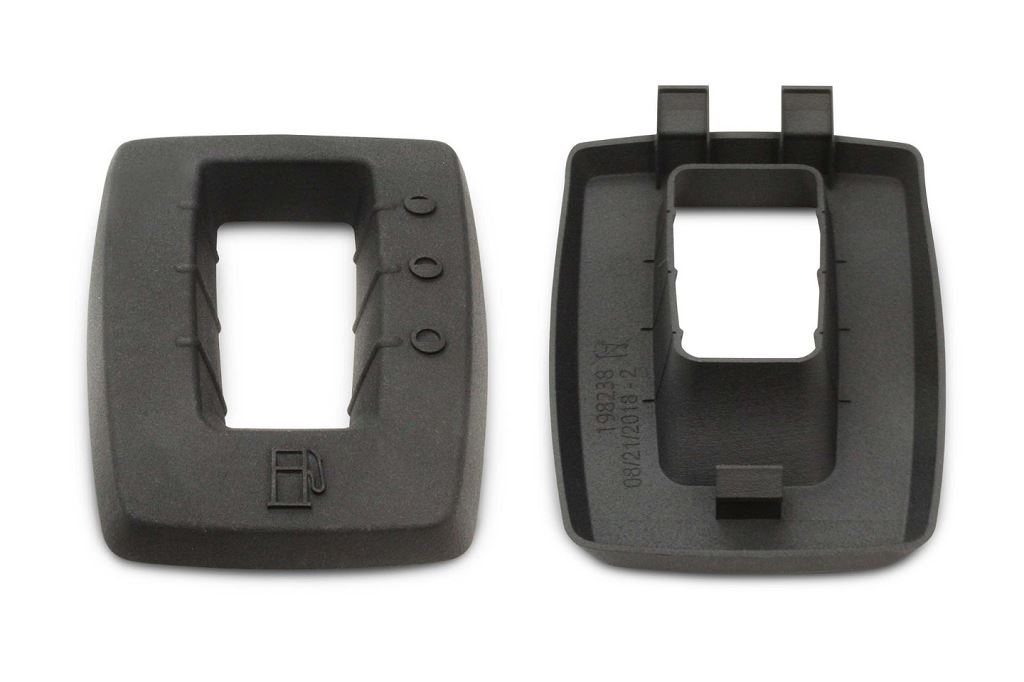![Jet Fusion-printed Husqvarna fuel window in their landscaping products [Image: HP Inc.]](https://fabbaloo.com/wp-content/uploads/2020/05/HQV-Photo1_img_5eb09a4161911.jpg)
Last year alone, HP’s Multi Jet Fusion technology was used to make more than 10 million parts.
Milestones are a thing to be celebrated in 3D printing as the technology is increasingly coming into play for end-use parts as well as for effectively every stage of the overall product development process. Often these milestones are in the form of qualifications, landmark parts, or perhaps a notable number of usable parts made. That last is clearly what we’re talking about today, but with another zero or two behind the milestone numbers we’ve perhaps become used to seeing to date.
It can be almost easy to forget how young the HP 3D printing portfolio actually is. Officially unveiled less than three years ago, the original Jet Fusion 3D printers were still ramping up to volume shipping in 2017 — and in 2018 surpassed that 10 million parts mark. Since the 2016 launch, HP has added the smaller color-capable 500/300 Series and just this past September formally introduced the Metal Jet systems.
HP isn’t a company to do things lightly; the major global company has operations in a number of technologies and is working to make the most of its hefty investment in 3D printing. Working with a number of partners and material capabilities allows for a good deal of versatility when it comes to 3D printing — and the company’s famous ambition to “disrupt the $12 trillion global manufacturing industry.”
“We are seeing an explosion of new applications across industries taking advantage of the design freedom, superior economics, speed, and industrial-grade quality unlocked by HP and its partners,” said Christoph Schell, President of 3D Printing and Digital Manufacturing, HP Inc.
With the company’s 3D printing portfolio continuing to expand, now including both Multi Jet Fusion and Metal Jet, and applications in both prototyping and production, Schell notes as well that HP continues to “build out our community of global partners.”
It’s these partners who will ultimately make or break HP’s disruptive ambitions. The company says:
“HP is working closely with innovative partners and customers around the world to transform the way they design, develop, produce, and distribute parts.”
So who’s doing this?
Fast Radius, which operates a number of additive manufacturing technologies, uses HP’s MJF for customers including Husqvarna Group, Yanfeng Global Automotive Interiors, and the US Marine Corps — and for HP itself, making final parts for HP’s Print, Personal Systems, and 3D Printing products. Automotive companies like BMW, Volkswagen, and Daimler Trucks North America are also among those working with HP to leverage MJF.
If 2018 saw more than 10 million HP 3D printed parts, 2019 is already looking to expand on that number, thanks in part to growing availability.
The Jet Fusion 500/300 Series is now shipping at volume and the Metal Jet Production Service is now widely available for final parts production.
The 500/300 Series, which is itself largely 3D printed, with more than 140 MJF parts in each printer, is seeing new customers in a variety of areas. In addition to Daimler Trucks North America underscoring automotive prototyping applications, new users include Unlimited Tomorrow to create more advanced artificial limbs and Clemson University for prototype and production of functional parts in its College of Engineering, Computing and Applied Sciences.
On the Metal Jet side, the rollout is different than it’s been on the polymer side, starting with the Production Service. HP says:
“Customers can now upload 3D design files and receive functional metal parts in large quantities. The parts are produced by HP partners GKN Powder Metallurgy and Parmatech to ensure the highest standards of engineering and production quality.”
So, 10 million parts?
It’s a good number — and it’s also only a beginning.
Via HP

